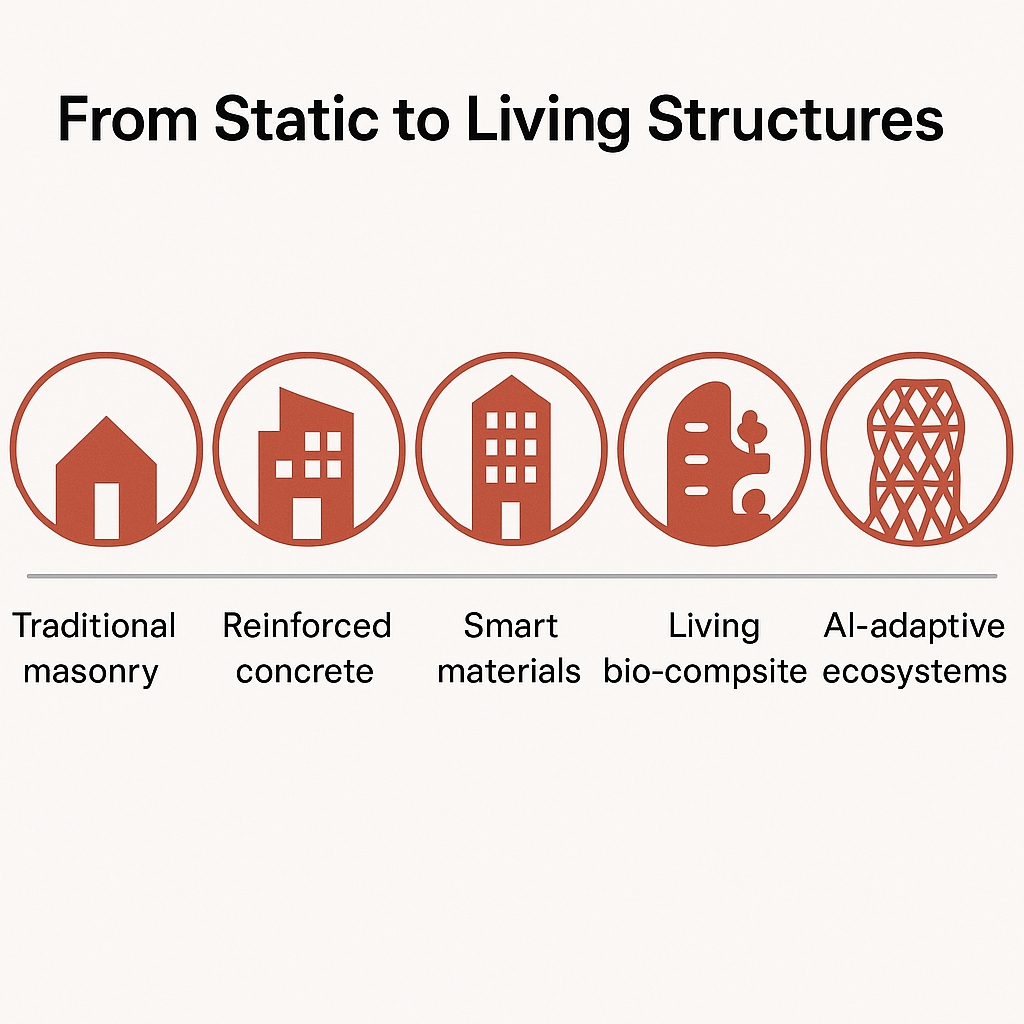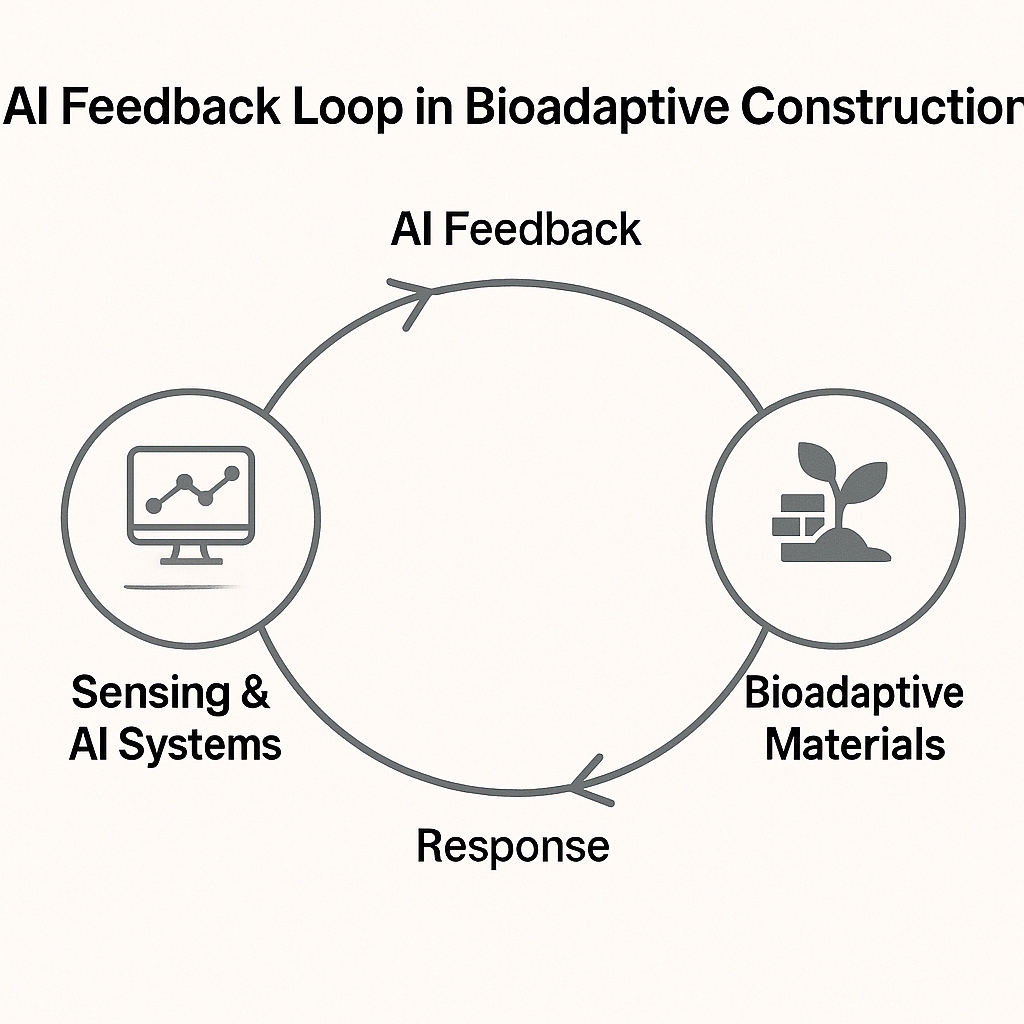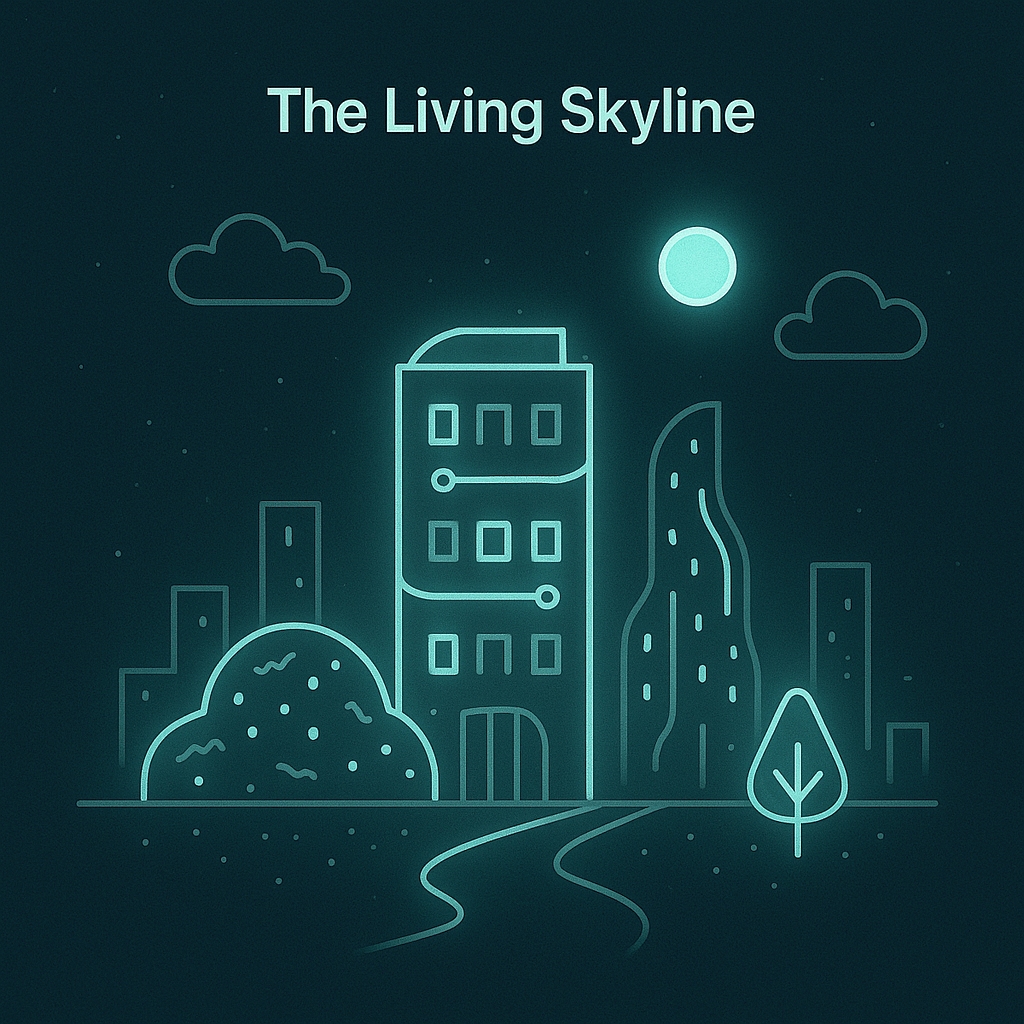The Rise of Living Materials and Smart Adaptive Systems
Executive Summary
The global construction industry stands on the edge of a new biological and technological revolution. Through the convergence of biotechnology, artificial intelligence (AI), and precision injection technologies, buildings are beginning to evolve from inert objects into living, adaptive systems. This article explores the history, science, and emerging applications of injection technology—a transformative process that introduces self-repairing bio-composites, microbial cementation, and responsive materials into modern architecture. It reveals how these innovations could reshape sustainability, urban resilience, and even the philosophy of design itself—creating structures that grow, adapt, and heal like living organisms.
Introduction: When Buildings Begin to Breathe
Imagine a building that heals its own cracks, adapts to humidity like skin, and produces oxygen as part of its daily function. This is not a scene from speculative science fiction but a vision that scientists, architects, and engineers are actively constructing today. At the center of this emerging paradigm lies an unassuming yet powerful process: injection technology.
In its simplest form, injection technology refers to the controlled delivery of materials—liquid polymers, resins, minerals, or even living organisms—into existing substrates to reinforce, repair, or transform them. Historically, this process has been used in geotechnical engineering to stabilize soil or repair cracks in concrete. But recent advances in materials science and biotechnology have expanded its meaning dramatically. Today, injection systems are being used to implant bioactive compounds, living microorganisms, and self-assembling materials that endow buildings with life-like behaviors.
The implications are profound. If traditional construction was about creating static forms, the new wave of living construction aims to generate dynamic ecosystems. Through the convergence of AI-driven monitoring, microbial engineering, and precise material injection, we are learning how to construct environments that sustain themselves—reducing carbon footprints, extending lifespans, and blurring the boundaries between the built and the natural world.

Historical Context: From Stone and Steel to Self-Healing Concrete
1. The Industrial Legacy
The origins of injection technology trace back to the industrial revolution, when engineers first experimented with injecting grout and resins into weak foundations to prevent subsidence. In the early 20th century, the technique matured, especially in tunnel and dam construction, where precision injection was used to seal water leaks and strengthen geological strata. These methods marked a crucial step toward controlled material infusion—the precursor to today’s bioinjection systems.
However, the philosophy of construction remained largely mechanical: materials were inert, and structures required constant external maintenance. Nature, on the other hand, followed a different logic. Biological systems self-organize, self-repair, and evolve in response to environmental changes. For centuries, architects—from Antoni Gaudí’s nature-inspired forms to Buckminster Fuller’s geodesic dreams—attempted to emulate nature’s design language. But only now do we possess the scientific tools to make that metaphor literal.
2. The Birth of Bioinjection
In the 1990s and early 2000s, a convergence of biomimetic engineering and microbial science gave rise to the first experiments with bio-cementation. Researchers discovered that certain bacteria could precipitate calcium carbonate—essentially producing natural cement. Through controlled injection, these microbes could be introduced into cracks in concrete, sealing them autonomously as they metabolized nutrients (Jonkers & Schlangen, 2008).
This innovation, known as Microbially Induced Calcite Precipitation (MICP), became a cornerstone of the self-healing concrete movement. For the first time, engineers witnessed buildings repairing themselves—slowly but surely—like living bones knitting after a fracture.
3. The Digital Awakening
By the 2010s, the rise of AI and robotics transformed injection technology once again. Machines equipped with sensors, neural networks, and 3D mapping could precisely determine where, when, and how to inject materials to maximize structural resilience. These systems combined machine learning with real-time feedback, allowing materials to be distributed with unprecedented accuracy—a process not unlike how living tissues respond to stress by reinforcing weak points.
Current Relevance: Making Construction Alive
1. The Climate Imperative
Construction is responsible for nearly 40% of global CO₂ emissions (IEA, 2023). Traditional materials like concrete and steel, while durable, are among the most carbon-intensive substances ever created. As the world moves toward carbon neutrality, the industry faces an existential challenge: how can we build sustainably without sacrificing strength and safety?
Injection technology offers a radical answer. By introducing bio-based compounds, carbon-sequestering materials, and AI-optimized resins, we can retrofit existing structures rather than demolish them—transforming static buildings into carbon sinks instead of carbon sources.
2. AI as the Nervous System of Living Buildings
According to the Norwegian National Strategy for Artificial Intelligence (Ministry of Local Government and Modernisation, 2020), AI should be leveraged not only for efficiency but for creating systems that respect human values and sustainability. In construction, AI is becoming the “nervous system” that senses, learns, and adapts.
Modern injection technologies are now paired with AI-driven predictive maintenance systems. Sensors embedded within concrete track micro-fractures, humidity, and microbial activity. When anomalies appear, the AI model triggers a micro-injection of bioactive materials—similar to how the human body releases antibodies to heal a wound.
This symbiotic architecture integrates physical infrastructure with digital cognition, creating a feedback loop where data informs material response, and materials, in turn, inform design evolution.

3. The Human Factor: Knoksen and the Art of Living Design
The Norwegian design collective Knoksen, known for blending artistry, nature, and technology in architectural storytelling, exemplifies how philosophy meets practice. Their approach echoes the idea that spaces should inspire and respond like living organisms. By collaborating with artisans and technologists, Knoksen infuses traditional craftsmanship with algorithmic precision—bridging the tangible and the digital (Knoksen, 2024).
In this context, injection technology becomes more than a technical process; it’s an artistic medium. When bioactive substances are introduced into materials, they reshape not only the physical integrity of structures but also their aesthetic and ecological narratives. A wall that slowly greens with microbial growth, or a façade that shifts texture in response to air quality, transforms architecture into a living performance.

Practical Applications: Building the Living Future
1. Self-Healing and Self-Adaptive Materials
In practice, injection technology underpins three major innovations in living construction:
- Microbial Self-Healing Concrete:
Using spores of Bacillus pseudofirmus embedded in capsules, cracks are autonomously sealed when water infiltrates, activating bacterial calcification. - Hydrogel and Nanopolymer Injection:
Smart hydrogels can swell or contract in response to moisture, restoring internal pressure balance and preventing structural fatigue. - Bio-Luminescent Facades:
Microalgae injected into transparent biopolymers create self-sustaining, light-emitting surfaces that reduce the need for artificial lighting.
These examples illustrate how injection technology is not merely about repair but evolution—allowing structures to respond dynamically to environmental changes.
2. Regenerative Urban Infrastructure
Cities like Singapore, Oslo, and Tokyo are piloting bioinjection systems that turn grey infrastructure into living carbon sinks. Through AI-controlled networks of injection nodes, carbon-absorbing materials are periodically infused into concrete surfaces. This approach extends the lifespan of infrastructure while reducing urban heat and improving air quality (RankMyAI, 2025).
Furthermore, bioinjected green façades—where root networks and fungal filaments are injected into porous substrates—allow vegetation to thrive without traditional soil. The result: vertical ecosystems that filter pollutants and support biodiversity.
3. The Role of Robotics and Starcoder Integration
The integration of systems like Starcoder2 (Open Source AI framework, 2024) into robotic injection platforms allows automated drones and crawler robots to conduct continuous self-assessment of buildings. By analyzing visual data, these systems decide where injections are required, formulate mixtures on-site, and execute repairs autonomously.
This AI-material synergy effectively gives architecture a nervous system and a circulatory system—data as neurons, and injection lines as veins delivering healing compounds.

Future Implications: Toward Regenerative, Conscious Architecture
1. The Circular Bioeconomy
As Norway’s AI and sustainability policies emphasize, the next decade will see convergence between digitalization and ecological consciousness. Injection-based living materials fit directly within the circular bioeconomy model—where waste becomes input for new growth.
Future systems may use bioreactors integrated into buildings, continuously generating injection materials from organic waste or captured CO₂. Instead of manufacturing new materials, cities could cultivate them internally, creating closed-loop construction ecosystems.
2. Ethical and Philosophical Shifts
The idea of “living architecture” also raises philosophical and ethical questions. Who owns a building that evolves autonomously? Should regulations treat bioinjected microorganisms as part of the structure or as living entities? As AI takes over material decisions, accountability must also evolve.
These concerns echo those raised in the Norwegian AI Ethics Framework, which stresses transparency, explainability, and human oversight (Ministry of Digitalisation, 2020). The challenge will be to balance innovation with responsibility—to ensure that living systems enhance, rather than override, human control.
3. The Era of Responsive Cities
Looking further ahead, injection technologies could enable metabolic urbanism—cities that behave like organisms. Roads that heal after traffic stress, bridges that sense corrosion and reinforce themselves, and façades that metabolize pollutants could become common by 2050.
In such cities, AI-driven injection systems would operate continuously beneath the surface, much like biological homeostasis, maintaining equilibrium between energy, materials, and life.

Conclusion: Toward Architecture that Breathes
The fusion of injection technology, biotechnology, and AI marks the birth of a new paradigm in construction—one where buildings are not merely shelters, but ecosystems in themselves. By making construction “alive,” we can transform cities into regenerative systems that repair themselves, interact with their environment, and even give back more than they consume.
This evolution mirrors humanity’s broader shift from domination of nature to co-creation with it. As injection systems deliver not just concrete but life, they remind us that the future of architecture may not be about building more—but about building with life itself.
In the decades to come, our greatest cities may not be monuments of steel and glass, but symbiotic organisms—breathing, adapting, and evolving in harmony with the planet they inhabit.
References (APA Style)
- International Energy Agency (IEA). (2023). Global status report for buildings and construction. Paris: IEA Publications.
- Jonkers, H. M., & Schlangen, E. (2008). Self-healing concrete by using micro-organisms. Ecological Engineering, 36(2), 230–235.
- Knoksen. (2024). Business plan and sustainable design philosophy. Internal publication.
- Ministry of Local Government and Modernisation (Norway). (2020). National Strategy for Artificial Intelligence. Government of Norway.
- RankMyAI. (2025). AI Report Norway 2025. RankmyAI.com.
- Starcoder2 Integration Guide. (2024). Deployment and application in automated AI systems. Open Integration Labs.
Discover more from Jarlhalla Group
Subscribe to get the latest posts sent to your email.



